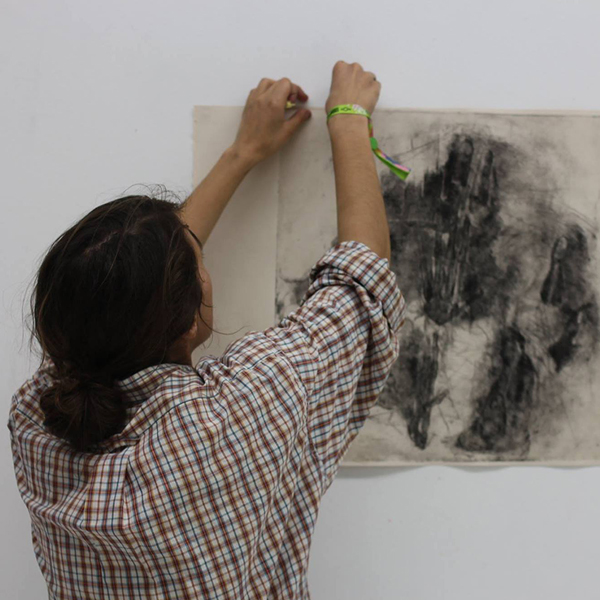Flor de Ceres Rabaçal
Faculty of Fine Arts of the University of Porto

Faculty of Fine Arts of the University of Porto

Flor de Ceres Rodrigues Fernandes Rabaçal nasceu em Lisboa em 1995. Concluiu a Licenciatura em Artes Plásticas em 2017 pela Escola Superior de Artes e Design das Caldas da Rainha e o Mestrado em Artes Plásticas em 2020 pela Faculdade de Belas Artes da Universidade do Porto. Completou uma Mobilidade de Erasmus na Accademia di Belle Arti de Veneza, com especialização em pintura. Foi co-autora do artigo, “A White Etching Ground for Drawing: An Argument for Rembrandt’s Lost Ground”, que apresentou na 8º edição da Conferência Internacional em Ilustração e Animação, (CONFIA) pela Escola Superior do Cávado e do Ave, na sua edição online em 2020. Trabalhou na Galeria Sala d’Estar, em Lisboa e trabalhou também enquanto assistente de ourives. Tem extensa participação em exposições coletivas tanto nacional como internacionalmente, destacando-se as exposições coletivas “Arte Emergente I” (Leiloeira Santo Eloy, 2022, Lisboa) e “Hammer Time” (Zaratan Arte Contemporânea, Lisboa) nas edições de 2021 e 2022. O seu trabalho artístico tem como principais motivos a violência, a atmosfera e a Natureza, bem como a concretização e aplicação destes temas no seu trabalho na gravura, que, por sua vez, caracteriza-se pela experimentação com materiais, superfícies e a química.
Thesis title
A Gravura e a Guerra: O Método como Evidência da Violência na Água-forte
FCT reference
2023.02603.BD
Abstract
This investigation proposal suggests the possibility that there is an inherent work system based on violence within the practice of etching. As a starting point for this artistic investigation, we will confront this system through the use of etching as a means for the representation of violence. As a case study we propose the study of printmaker and painter Adriano de Sousa Lopes (1879-1944) and the series of etchings the artist created based on World War I. Within the Pure Print Archeology research group, affiliated with i2ADS, in collaboration with Lisbon’s Military Museum and through reproductive practices and technological archaeology, we will identify the methods and materials used in the war effort, framing them within the context of war portfolios and reportage drawing. We intend to construct a technological reconstruction of this portfolio, and demonstrate that, in artistic creation, there is room for historical context and know-how, this way expanding the territory of practices within contemporary printmaking.
Supervision
Maria Graciela Cabral Machado (supervisor) and Francisco António Amado Rodrigues (co-supervisor)
More info